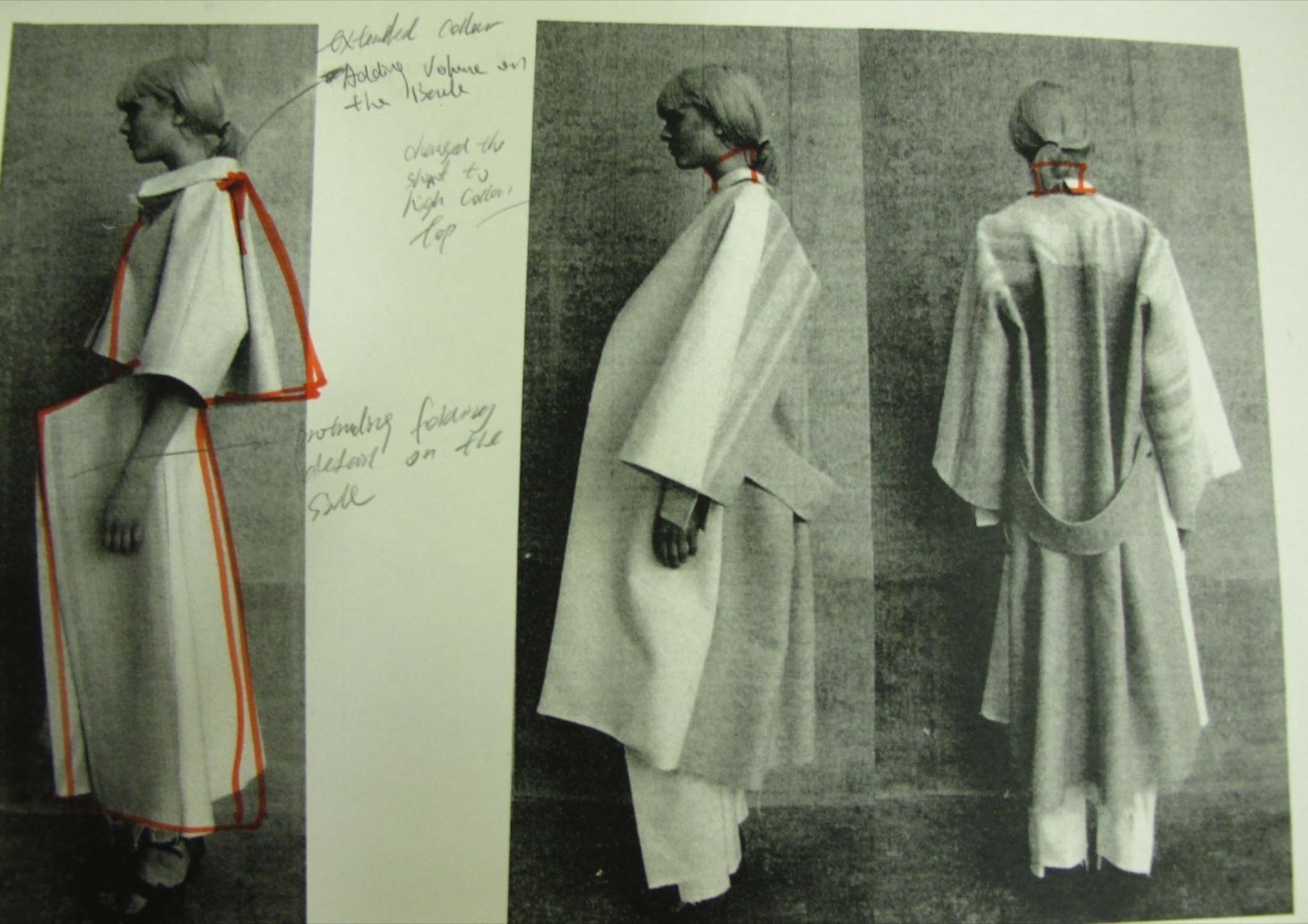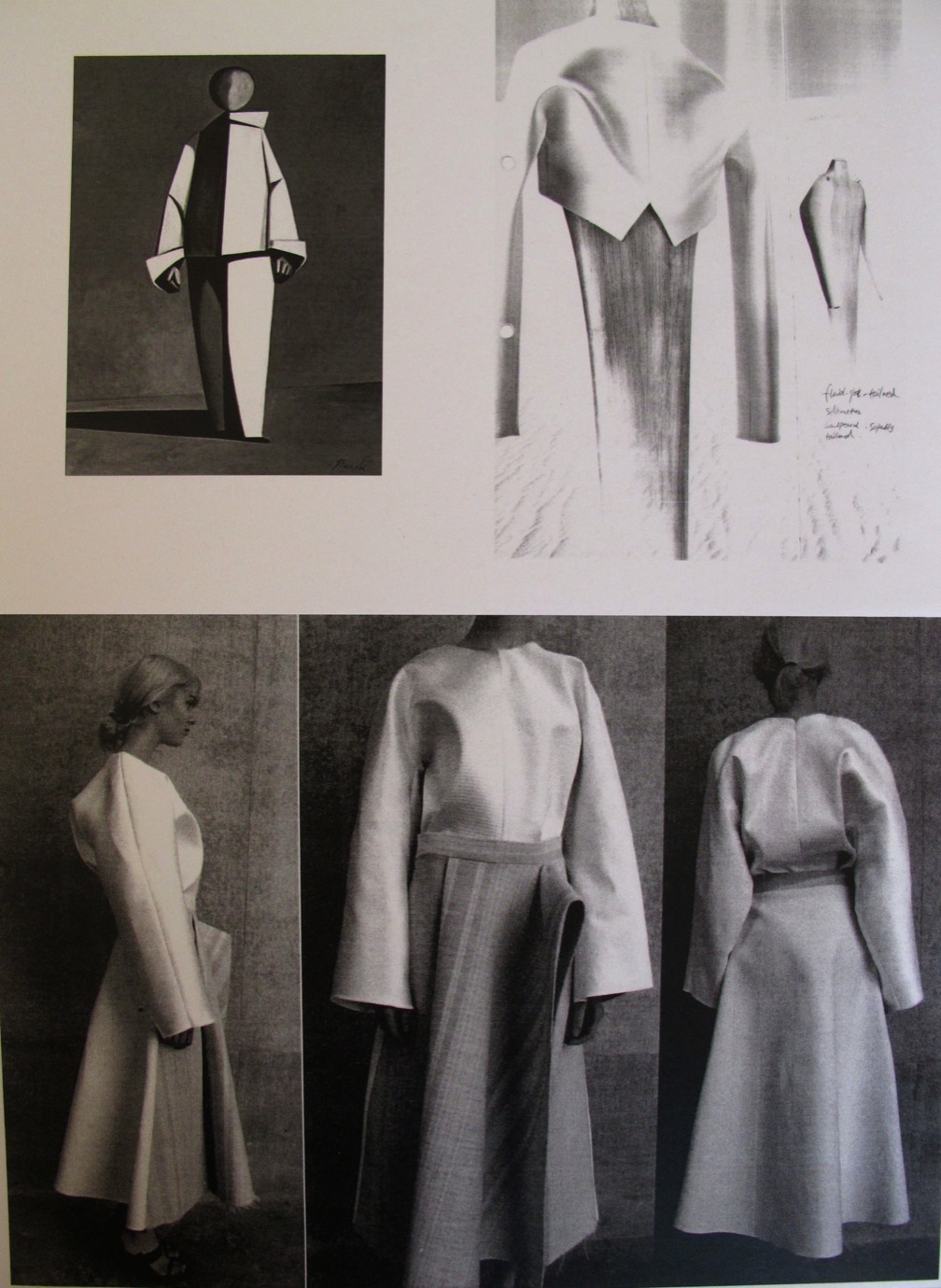
Go and search ‘Lady Gaga interview BBC Breakfast 2013‘ on YouTube. You will see her in gigantic hair with seashells and, more importantly, Ming Ma’s BA graduate show piece. After finishing his BA, Ming Ma continues his study MA Fashion Womenswear here at CSM. We caught up with this vibrant boy, and ardent minimalist to talk about his BA graduate show and his Lady Gaga encounter.
What was the moment when you look at the face of fashion and suddenly fall in love with it?
I have a friend who loves to talk about clothes and fashion with me in high school. I come from an industrial city where there aren’t many resources on fashion and culture. Luckily my friend used to order magazines from overseas like So-en and i-D. We’d devour the magazines for a month. At that time fashion was a bubble for me to escape the boring school life.

So, why CSM? Are you also one of these ‘only CSM or nothing’ kind of guys?
Before I came to study at CSM, [I’d] studied finance for three years [at] university. I remembered it was during my second year, I started to loathe what I was doing. I just can’t imagine my future working in a bank. And I decided to do fashion which is something I’ve always been interested in. During that time I’ve already read lots of stories, and interviews about the education at CSM which made me eager to find out what it would be like to study there first-hand.
What do you feel CSM has offered you? Or, how do you feel you can contribute to CSM?
The school provides us a platform. I feel lucky I have the chance to meet many interesting and talented people from all over the world. We all come from different backgrounds, so the fusion of different cultures really helped me get inspired. We learn from each other. Also, it’s been great to see things from other perspectives.
What inspires you?
Anything that makes me excited really. It doesn’t always have to be about the visuals.
Can your share with us what it’s like to be a BA fashion Womenswear student? You are aware that it is a spot that every fashion lover would kill for, right?!
We [had] around 50 students during the first and second year, and 40 in the end. Students are very diverse and we all [have] different skills and strengths. Womenswear is a relatively larger field, and the teaching doesn’t focus on specific techniques. It gives us more freedom to think about womenswear fashion in new ways but somehow it is harder to stand out from the crowd.
Were there any major failures during your BA years at CSM?
I came to the course straight after my finance degree. From the very first White Project, I had no idea how to do proper research. Compared to the students who did foundation, my sketchbook was rubbish. Plus I had very limited technical skills, and we had to produce a final outfit in 4 weeks. For a student with no background, it was quite harsh.
I had a nice tutor who found one good quality in me. She told me that I was good at cutting and draping, and asked me to never stop developing my skills. After that I’ve been carrying on pushing the strength and depth of my work.
Your BA show was amazing and a very specific style. How would you describe that, and can you tell us why you are so interested in this aesthetic?
The collection’s emphasis is very clean; well-constructed designs. I started my research on a painting by Italian artist Duilio Barnabé, who reduced all subject matter in his paintings to their purist form, and his monochromatic backgrounds made them timeless. Through looking at photographs by Richard Bryant, I became more focused on developing simple, but sculptural lines. Creating volumes but making slits on certain parts of the body. Protruding details of the garments can be seen at different angles. The 3D quality of each outfit was developed through the process of draping and cutting.
Describe the ideal Ming Ma woman?
The ideal women who’d wear my designs are independent, brave and not afraid to be different.
Lady Gaga wore your design in an interview with BBC. How did that happen?
It’s great that she is so supportive of young designers. Actually Lady Gaga’s stylist’s assistant asked me to send a few of my designs to New York two months ago. I was unable to do so because I was traveling around at the time. Until recently, Lady Gaga came to London for her performance at the Roundhouse, and I sent my designs for her.
Has your Chinese or Asian identity played a role in your final BA show or your fashion career in general? Or do you believe in style/sub-culture rather than nationality/ oriental culture?
I think the Chinese identity will always be within me. However it is not necessary to be very obvious with the Asian elements in the designs. The oriental aesthetics can be expressed in a more in-depth and subtle way.
You also made it to MA fashion womenswear at CSM this year, congratulation! Can you tell us what you are trying to achieve during your MA? How different will it be from your BA study?
BA was like giving you the freedom to do anything you like. I don’t have to worry about the market or the wearability. I’ve been exploring my personal mark throughout the degree. For MA, I aim to establish a stronger, more original vision.
What about your future plan? Set up studio or work for your beloved designers? Who would you like to work for?
I’d love to work for company first. It’s necessary for me to gain the experience and to understand the industry from many different perspectives. Ideally I would love to work for Christophe Lemaire. I love his aesthetics and respect his philosophy on fashion.
Where do you see yourself in the Chinese fashion industry if you plan to develop yourself in China? It is a huge market.
From the high street brands to luxury houses, I think everyone nowadays is aiming at the Chinese market. It’s very likely I will go back to work in China but I don’t think I am ready to establish my own label. That’s why I’ve decided to continue studying at CSM, to get the highest level of education.
Any final words of advice for future and current CSM students?
Be passionate about what you are doing and stay true to yourself.
The post A Bubble to Escape the Boring School Life- Ming Ma on Fashion appeared first on 1 Granary.
















































































 You don’t frequently see students figuratively ditching their writing course to go and do something completely different, like hands-on styling. However,
You don’t frequently see students figuratively ditching their writing course to go and do something completely different, like hands-on styling. However, 






 PHOTOGRAPHER
PHOTOGRAPHER 



















































































































































